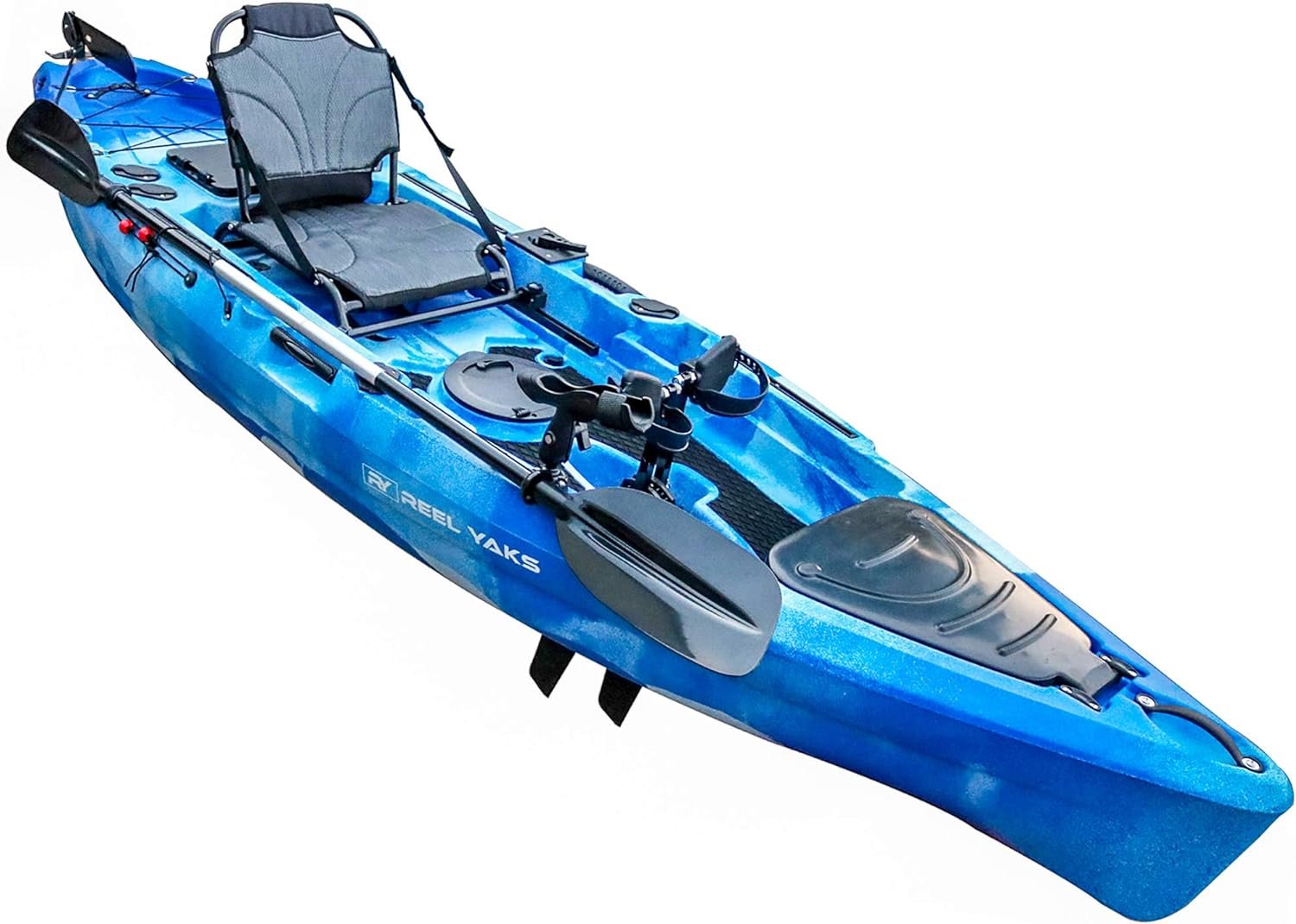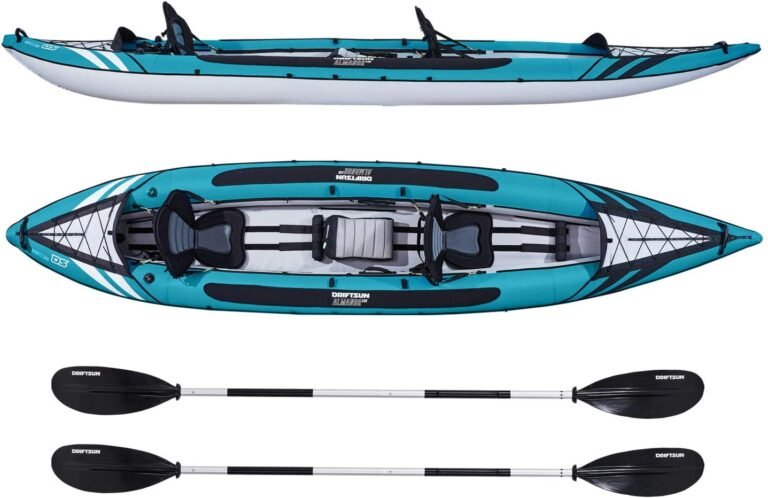How to Steer a Pedal Kayak

Pedal kayaks have become increasingly popular among water enthusiasts because they offer a unique and hands-free kayaking experience. Understanding how to effectively steer a pedal kayak is crucial for effective maneuverability and control while out on the water.
Pedal kayaks, equipped with foot-operated propulsion systems, have gained a significant following for their ease of use and efficiency.
Unlike traditional paddle kayaks, these innovative watercraft allow you to propel forward using pedals, leaving your hands free for other activities or maintaining a secure grip on fishing gear.
To help you unlock the full potential of your pedal kayak, we’ve compiled a comprehensive guide on steering it well. Following these steps will not only improve your maneuverability but also contribute to a seamless and enjoyable kayaking experience.
Different Types of Steering Mechanisms In Pedal Kayaks
Pedal kayaks come with diverse steering mechanisms, each contributing to the kayak’s maneuverability. Below, we delve into 3 mechanisms.
1. Rudder Systems
Rudder systems are a common steering mechanism in pedal kayaks. These systems feature a deployable rudder that can be controlled using foot pedals.
By adjusting the angle of the rudder, kayakers can influence the direction of the kayak. Rudder systems are effective for maintaining a straight course and executing controlled turns.
2. Fin Systems
Fin systems involve the use of retractable fins beneath the kayak. Controlled by foot pedals, these fins contribute to steering and stability. Fin systems are often found in pedal kayaks designed for swift, agile movements, making them suitable for navigating various water conditions.
3. Propeller Steering
Some pedal kayaks use propeller steering, where pedals are connected to a propeller beneath the kayak. Pedaling forward propels the kayak, while steering is achieved by manipulating the direction of the propeller.
Knowing the steering system of your pedal kayak is paramount for mastering its effective navigation. Different systems require different techniques and adjustments.
You can tailor your approach to maximize control and responsiveness, ensuring a more enjoyable and safe kayaking experience.
A Detailed Guide to Steering Your Pedal Kayak
- Understand Your Kayak’s Design: Familiarize yourself with the specific design features of your pedal kayak. Take note of the rudder system, pedal mechanisms, and any additional control features.
- Adjust Your Seat and Footrests: Ensure your seat is properly adjusted for comfort and the best pedal reach. Set the footrests to a position that allows for efficient pedal operation.
- Understand Rudder Control: Learn how to engage and disengage the rudder system. Practice turning the rudder to get a feel for its responsiveness.
- Grasp Straight-Line Paddling: Start by pedaling in a straight line to understand the kayak’s primary movement pattern. Maintain a steady pace to build a foundation for more advanced maneuvers.
- Initiate Basic Turns: Practice making gentle turns by using slight pressure on one pedal. Experiment with both left and right turns to develop a sense of balance.
- Refine Turning Techniques: Gradually increase the intensity of turns by applying more pressure on the pedals. Use a combination of pedal movements to execute sharper and more controlled turns.
- Navigate in Wind and Currents: Learn how wind and currents affect your kayak’s steering. Adjust your technique to counteract external forces.
- Practice Emergency Maneuvers: Prepare for unexpected situations by practicing emergency stops and quick turns. Develop the ability to react swiftly to ensure safety in challenging conditions.
Pedal Kayak Steering Techniques
Forward Steering
Turning To The Right Using Foot Pedals: If you want to turn the kayak to the right, apply gentle pressure to the right foot pedal. The kayak will respond by smoothly steering to the right. Practice finding the right balance of pedal pressure for precise and efficient turns.
Turning To The Left Using Foot Pedals: To initiate a left turn while paddling forward, gently press the left foot pedal. This action adjusts the rudder or steering mechanism, causing the kayak to veer to the left. Maintain a steady pedal pressure for a controlled and gradual turn.
Reverse Steering
For reverse steering, adjust the foot pedals to engage the reverse mode. Familiarize yourself with the pedal adjustments required for your specific pedal kayak model.
Once in reverse mode, use the foot pedals to guide the kayak backward. Be cautious and start with small adjustments to get a feel for the reverse steering response.
Neutral Position
Return the foot pedals to the neutral position to maintain a straight course. Centering the pedals helps stabilize the kayak, allowing you to paddle forward without any turning influence.
When cruising in a straight line, keep the pedals centered to ensure a steady trajectory. This neutral position is crucial for covering long distances efficiently and without unnecessary course corrections.
Fine-Tuning Turns
For sharper turns, increase the pressure on the foot pedals gradually. This adjustment allows for a tighter turning radius, ideal for navigating around obstacles or making precise directional changes.
In situations requiring subtle maneuvers, slightly adjust the foot pedals to achieve gradual turns. Practice this technique to confidently navigate tight spaces, such as narrow channels or between obstacles. Regular practice will help you get better.
Troubleshooting Common Steering Issues
Foot Pedal Maintenance
Maintain foot pedal efficiency by cleaning and lubricating the pedal mechanisms. Tighten any loose components and replace worn parts. Consistent pedal maintenance contributes to a reliable and responsive steering system.
Control Cable Adjustments
For control cable issues, check for tension and alignment. Adjust cables accordingly to ensure smooth and responsive steering. Regularly inspect and maintain control cables to prevent potential steering problems.
Rudder or Propeller Jams
If you experience rudder or propeller jams, carefully inspect for debris or obstructions. Clear any obstacles, lubricate moving parts, and test the steering system before continuing your journey.
With the above guide and a decent amount of practice, you should be able to steer your pedal kayak more effectively.






